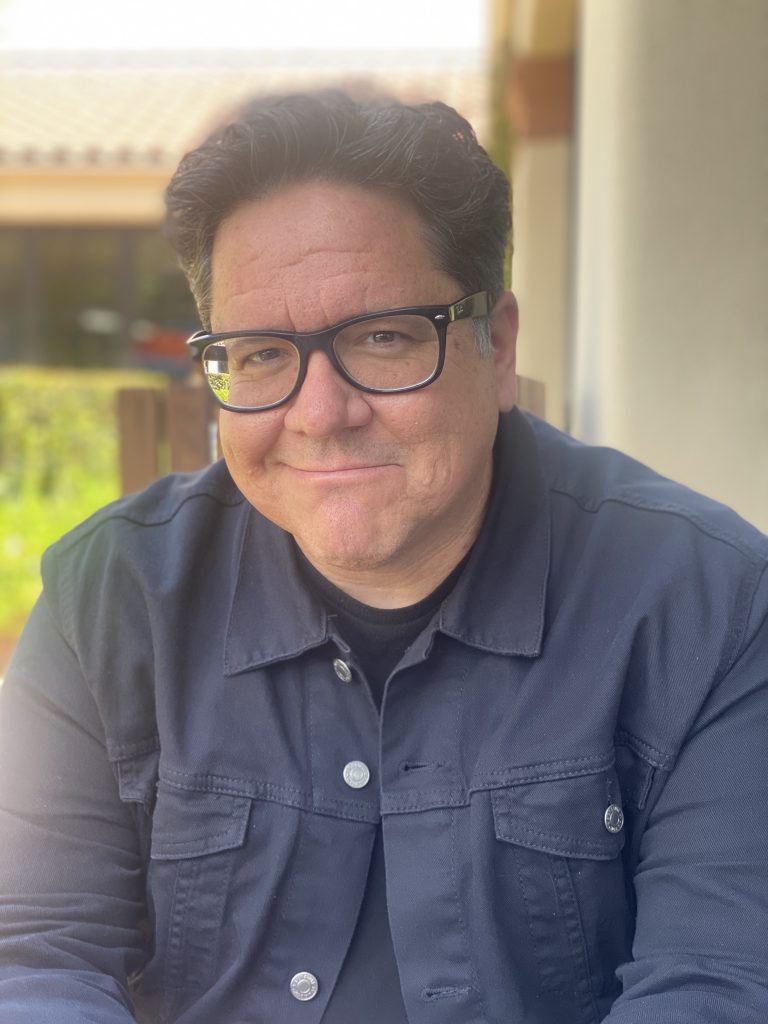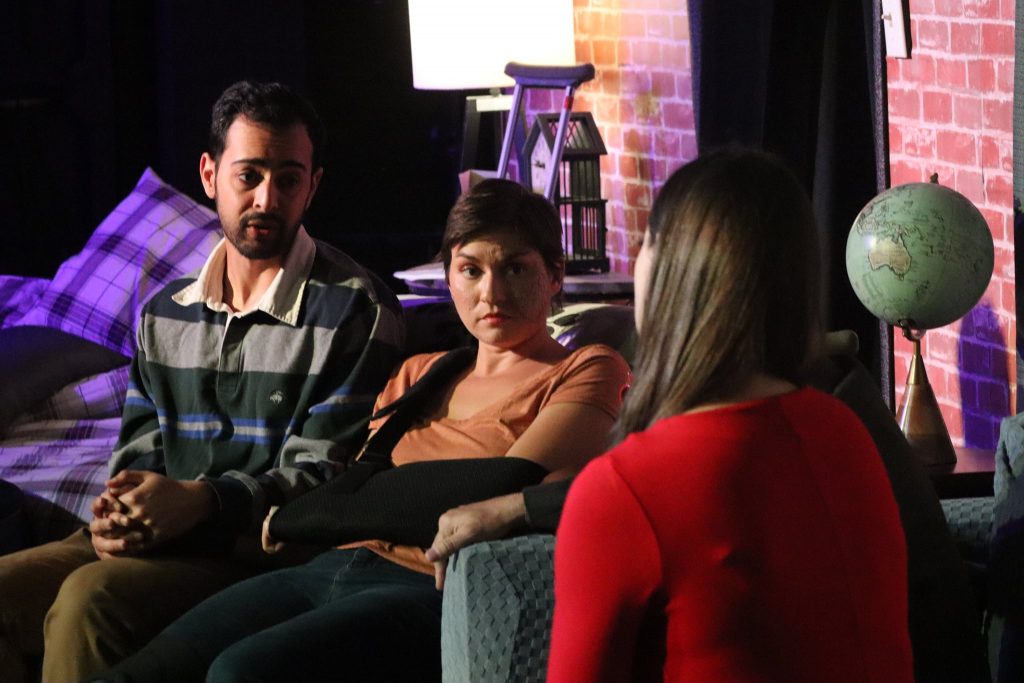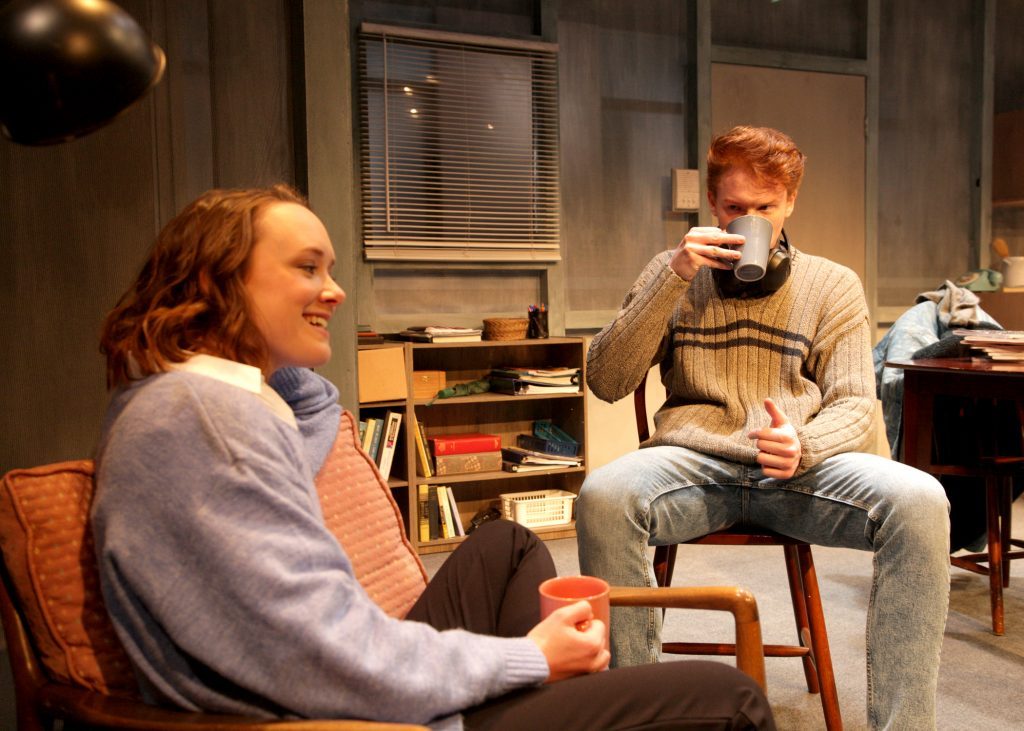
Guest Writer
Written by Eric Eberwein
On the surface, the formula for success in Orange County storefront theatre seems clear.
- You give your audience what they want, and
- You keep them coming back.
Obvious enough, it’s the “what they want” part that is not always so obvious.
To paraphrase the great Jerry Patch, what theatergoers think they want to see may not be what they would really love seeing most – that is, what would really move them or make them laugh hardest.
Understanding the perceptual gap is the key to a better local theatre scene.
In roughly 25 years, OC storefront theatre has gone through three distinct “waves”. The first wave (early 1990s) was defined by the pioneers: Revolving Door Productions and Vanguard Theatre Ensemble in Fullerton, Alternative Repertory Theatre and Way Off Broadway Theatre in Santa Ana, and The Theatre District in Costa Mesa.
In the early 2000s, the great “second wave” of OC storefront theatre coalesced. Rude Guerrilla Theater Company, the Chance Theater, Breath of Fire Latina Theatre Ensemble, the Hunger Artists, STAGEStheatre, Gallimaufry Performing Arts, Insurgo Theatre Movement, Rogue Artists Theatre, Theatre Out … none of these ensembles aimed to do bland community theatre. They wanted to do something finer, and by and large, that is what they did. They wanted to be at the leading edge –not the trailing edge.
Looking back, this looks like the high-water mark of OC storefront. The Los Angeles Times celebrated this “second wave:” Mike Boehm’s lengthy, all-editions Calendar Weekend cover story in 2004 alerted theatre artists in L.A., the Inland Empire, San Diego and across the country to the scene’s excitement and achievements.
Then things changed. Roughly coincidental with the recession, a “third wave” of OC storefront theatres emerged with programming that was decidedly trailing-edge. In recent years, this trailing-edge model of OC storefront theatre has threatened to become the “new normal.”
If one to two local storefront theaters decide to program mostly trailing-edge work, that isn’t cause for concern. If five to six (out of eight or nine) make that decision, you have a theatre scene quickly veering toward irrelevance.
If you look at theatre scenes in comparably sized, similarly sophisticated metropolitan areas (Seattle, Boston, Twin Cities, Chicago, Miami, etc.), you don’t see the storefront theatres putting up Steel Magnolias, The Foreigner, Don’t Dress for Dinner or Wait Until Dark. These are the kinds of plays you see at a community theatre in Lubbock. (Actually, I take that back: Lubbock Community Theatre just produced a new play by a Texas Tech MFA playwriting grad, so Lubbock may be gaining ground on us.)
Incredibly, all four of these plays have been produced at an OC storefront theatre within the past three years, and the list of trailing-edge choices creeping into the seasons hardly stops there (The Importance of Being Earnest, The Odd Couple, Teahouse of the August Moon, Heaven Can Wait).
Producing theatre involves constant risk, and the Great Recession pressured local theatre producers to become risk managers. As the trailing-edge theatre model emphasizes the familiar, it was a perfect fit in a bad economy. The recession is over now, but the model remains popular. Some local theatres are embracing it like it’s a relative at an airport.
The trailing-edge theatre model makes the following assumptions about the OC storefront theatre audience:
- They want to see musicals. (Hence the recent, near-maniacal local quest to stage every musical in the American canon).
- It better be a musical or a classic. (If it’s not a musical or a classic, they won’t show up).
- They don’t want the new shit. (They don’t want to see this or this or this. Those kinds of plays belong in Los Angeles County, and they do not belong in Orange County).
- They definitely don’t want to see plays written by or about people of color. (You say you have a play about a Southeast Asian immigrant family trying to adjust to life in Southern California or a play about Latinas trying to find their way in the punk scene of the late Seventies? Forget it. They don’t want to see that. If we put that up, five people will show up. Besides, it takes an “effort” to cast those plays).
These are assumptions, not truths. Shows have upended them in the past, and shows will in the future. But the more entrenched these assumptions become, the more local theatre limits its ambitions and inclusiveness, and the more we encourage productions of a) plays written for the audiences of 40 years ago and b) plays written as if the last 40 years never happened.
The great OC storefront theatres of the 1990s and 2000s didn’t believe in these assumptions. If they had, they never would have started. They had the courage to program the kind of theatre previously unseen in Orange County. As a result, they changed the game.
The recently popular, retrogressive OC storefront theatre model has risked changing it back. It mistrusts the singular and distinctive, and it exalts the ordinary and predictable. If a local theatre ends its season with the same three shows for five consecutive years, that isn’t boring; it’s smart.
(I fear that the era of Rude Guerrilla, the Hunger Artists, etc., is slowly being re-contextualized as artistically idiotic – a time when naïve and unrepentant youths programmed extreme, aberrational plays and tragically failed to realize the full potential of their small businesses).
When a trailing-edge theatre model risks becoming the “new normal,” there are side effects. Directors and actors who yearn for adventurous work drop out of the scene or move away –feeling there is nothing here for them anymore. Local playwrights fall into a kind of self-censorship –sensing they need to write down to the level of community theatre instead of up to the level of American theatre.
In the trailing-edge storefront theatre model, financial success equals artistic success, and the economic value of a show is its main value. The producer is the owner-operator of a small business first, and the artistic director of a theatre company second or third.
Storefront theatre is a producer’s game, which means the money of one person (or one household) is on the line: not just pocket money, not just a checking account balance, but perhaps retirement money or mortgage money as well. This reality is undeniable. Whether it should be the primary influence on a theatre’s programming is open to debate.
In 2014, there were signs of the pendulum swinging back. The top-tier OC storefront theatres have consistently programmed contemporary and adventurous work, and they are doing so again this year – we see new and newer American plays conspicuously on their stages. The best thing you can do as a theatre artist is to see those plays and support those programming choices. That will shift the definition of success. Our storefront theatre scene should be one we have aspired to –not one we have settled for.
Eric Eberwein is the longtime director of the Orange County Playwrights Alliance (OCPA) and associate artistic director of OC-centric: Orange County’s New Play Festival at Chapman University.






















































It’s time for Hunger Artists to return.